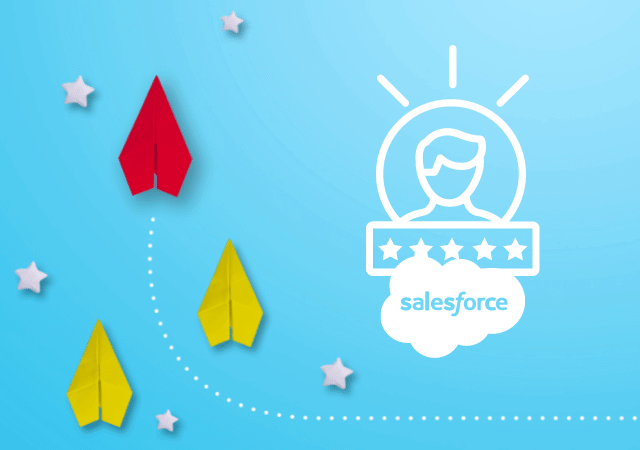 Contact us
Contact us How To Move Beyond CRM Technology (4 steps)
Delivering great customer experiences takes a united effort across teams and departments. It takes someone with a vision and leadership skills (Trailblazer) to align your teams internally and make everyone believe the identical mission.
Trailblazers are stakeholders in chief marketing officer, chief design officer, chief experience officer, or chief innovation officer. They, or others like them, have a vision for transforming how a team is concerned by personalization. Plus, they’re going to govern strategy across the marketing, sales, and service departments. 
Your consumers consider you a single brand, not different brand experiences across different touchpoints owned by different departments. Therefore, the role of the Trailblazer must be to make seamless interactions. The goal is for customers to experience every touchpoint as part of a continual, flawlessly connected experience across channels.
It’s important to approach your strategy with a transparent understanding of scope and objective. Choose one goal, and make it easy to measure and achieve. For example, is it a real-time offers program that will increase campaign conversion or something else?
Once you’ve successfully identified which part of the customer journey to personalize, it’s easier to maneuver on to an even bigger project. You’ll have context for the patron, a stronger understanding of the thanks to executing and achieve your goals, plus you’ll already know what’s worked for you within the past.
The Four Steps to Customer Engagement
1. Discovery
Discovery is about understanding your brand, establishing a baseline view of what you want and want to change. Start by building an understanding of where you’re today. What do you already understand about your customers? What value do they currently place in you? What are you trying to spice up? In which way are those improvements to be reflected in the customer satisfaction scores? Who are the stakeholders in each business unit? You’re trying to seek where your company is, so you’ll quickly start to implement a customer engagement strategy.
2. Scope Setting
When you’re building your customer experience strategy, there is a lot to think about, but if you’re taking it step by step, everything should fall in its place easily and quickly. Don’t try to do everything immediately. Instead, give yourself (and the rest of the business) time to give some thought to and answer what has got to be done. Just agreeing on the immediate priorities for each stage makes life plenty easier. Simple things like deciding what “good” looks like, agreeing on the drivers behind customer engagement, and knowing the thanks to measuring success can help the project run smoothly.
Once you understand the experience your customers want together with your brand, you will start to deliver it. So take time to understand the customer journeys in real-time: How do customers interact? What are their needs? Develop customer hypotheses, and identify communications channels, and therefore the thanks to integrating journeys across all of them. Don’t do that in isolation. Everyone should agree on the scope. By the highest of this scope-setting phase, you need to have buy-in from all the business stakeholders.
3. Deploy and Optimize
At this step, you have selected a CRM technology solution like Salesforce’s Interaction Studio, and you’re getting right down to use it.
You may need to integrate technology across the business at different times, so make sure the organization’s stakeholders remain onboard. Interaction Studio easily works with any CRM technology or system of record, but if you’ve got a more complex need, build at your own pace.
4. Customer Value
Remember that setting measures for what “good” looks like pays off. You can now demonstrate to the business that the investment has been worthwhile (plus, you’ll appear as a customer engagement rock star). But customer experience doesn’t stop here. In many respects, you’re just getting started.
New customer insights facilitate your establish more customer-centric processes and see lasting customer value. As a result, your business can adapt, adjust, and alter to satisfy customer needs and provide a more personalized, relevant, and ongoing conversation.
You can uncover Customer Champions who confirm the business responds to process changes the way it should. Then, as you (and your stakeholders) start to work out the value of customer engagement, you will be able to start to rearrange your business in an exceedingly more customer-centric way.
You can move beyond technology now. Instead of integrating and supporting CRM technology, you can now facilitate and manage every customer interaction throughout the journey. So ensure you’ve selected a scalable solution and should grow with you.
Lukáš Endal, Partner – Salesforce Services

